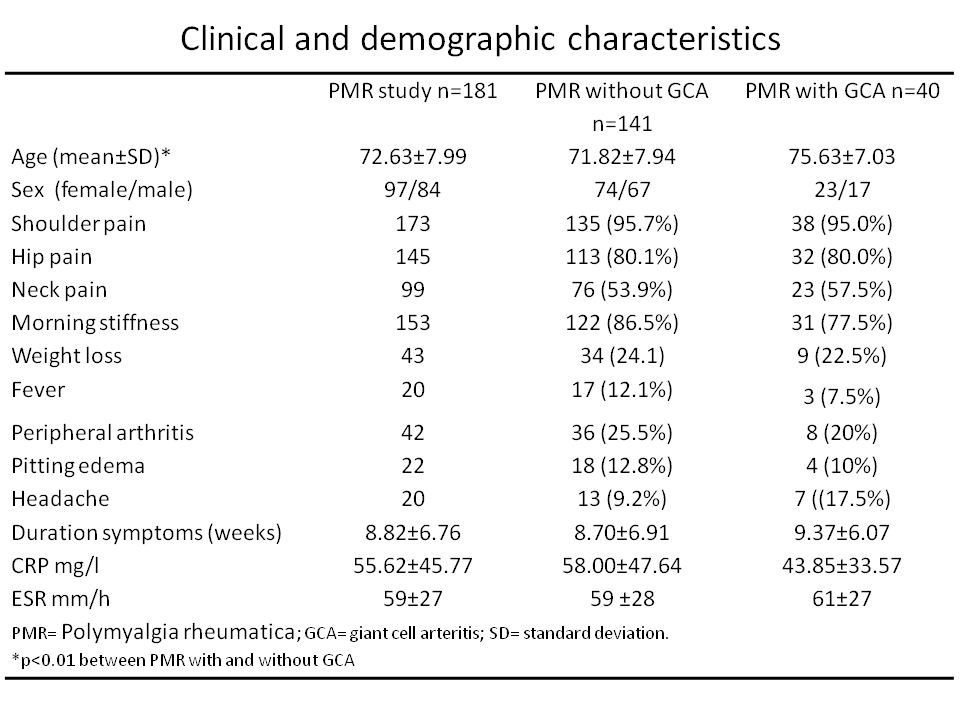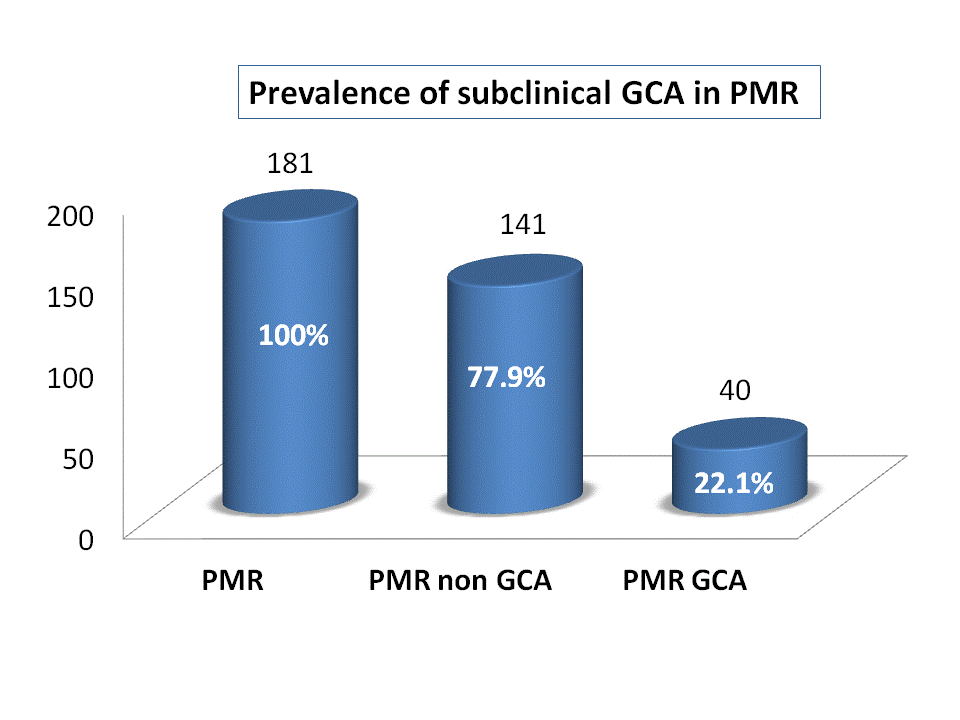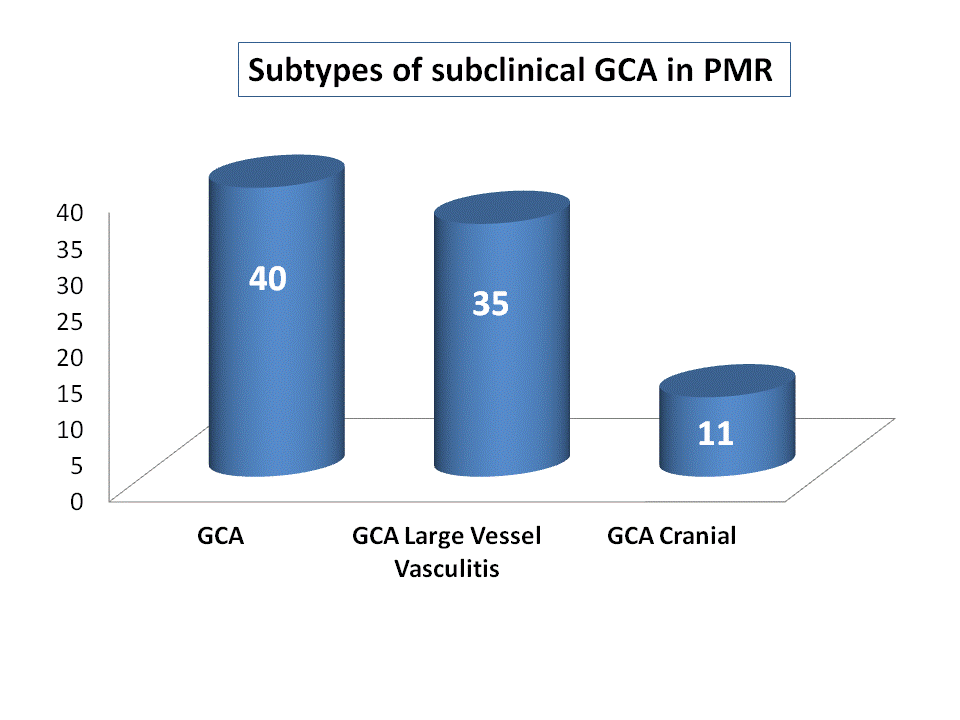Session Information
Session Type: Abstract Session
Session Time: 10:30AM-10:45AM
Background/Purpose: Polymyalgia rheumatica (PMR) and giant cell arteritis (GCA) are closely related diseases. PMR occurs in approximately 50 % of GCA patients1, however the frequency of subclinical GCA in PMR has not been widely studied. Furthermore risk factors for the clinical expression of GCA in PMR have not been clearly established. The aim of our multicenter, prospective study was to determine the prevalence of subclinical GCA in newly diagnosed PMR, using vascular ultrasound (US) as a diagnostic modality.
Methods: Six rheumatology centers participated in the study. The studied cohort represented consecutive newly diagnosed PMR patients who fulfilled 2012 EULAR/ACR Provisional Classification Criteria for Polymyalgia Rheumatica2 and had no symptoms or signs suggestive for GCA. Besides hip and shoulder ultrasound all studied patients underwent detailed US examination of 5 vessel territories, bilaterally (i.e. temporal, carotid, subclavian, axillary and femoral arteries). The halo sing was considered as positive US finding3. In addition intima-media thickness of arteries was measured, with a cut-off of 0.34 mm for temporal arteries (TA) frontal and parietal, 0.42mm for common TA, and 1 mm for common carotid, axillary and subclavian arteries for positive result. Clinical characteristics of PMR patients were recorded and the frequency of subclinical GCA determined.
Results: US examinations were performed in 181 patients, 97 (53.6%) females with a mean age of 72.63±7.99 years. A halo sign was found on at least one of the examined arteries in 40 patients (22.1%). Cranial artery involvement was found in 11/120 patients, and 35/181 patients (19.3%) had extracranial large artery involvement (Figure 1 an d 2). Table 1 shows the characteristics of studied population. Except of patient age that was significantly higher in PMR with GCA, there were no other specific PMR signs or symptoms predictive for subclinical US proven vasculitis.
Conclusion: The prevalence of subclinical GCA in patients with PMR was 22.1%. Increasing age emerged as a risk factor for subclinical GCA .
References:
1 Buttgereit F et al. JAMA. 2016;315:2442-58.
2 Dasgupta B et al. Arthritis & Rheumatism. 2012; 64:943–954
3 Chrysidis S et al. RMD Open. 2018;4(1):e000598.
To cite this abstract in AMA style:
De Miguel E, Macchioni P, Conticini E, Campochiaro C, Karalilova R, Klinowski G, Falsetti P, Monjo I, Tomelleri A, Batalov Z, Hocevar A. Subclinical Large Vessel Vasculitis in Polymyalgia Rheumatica [abstract]. Arthritis Rheumatol. 2021; 73 (suppl 9). https://acrabstracts.org/abstract/subclinical-large-vessel-vasculitis-in-polymyalgia-rheumatica/. Accessed .« Back to ACR Convergence 2021
ACR Meeting Abstracts - https://acrabstracts.org/abstract/subclinical-large-vessel-vasculitis-in-polymyalgia-rheumatica/



